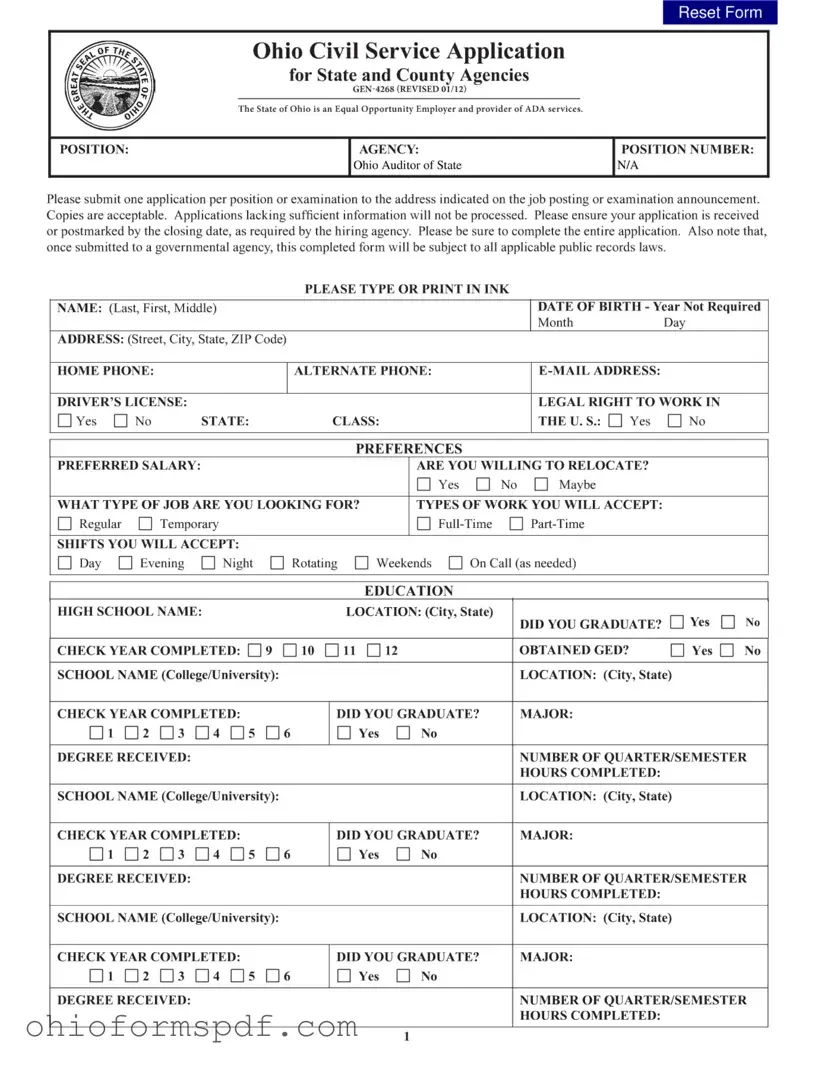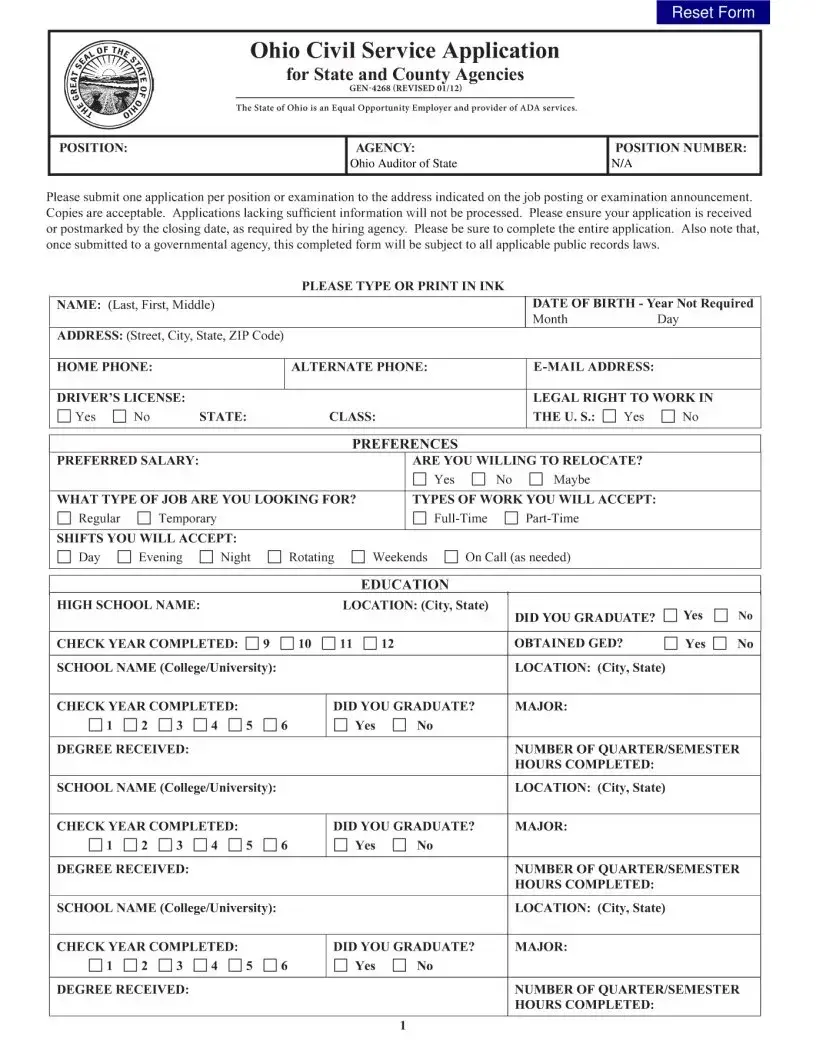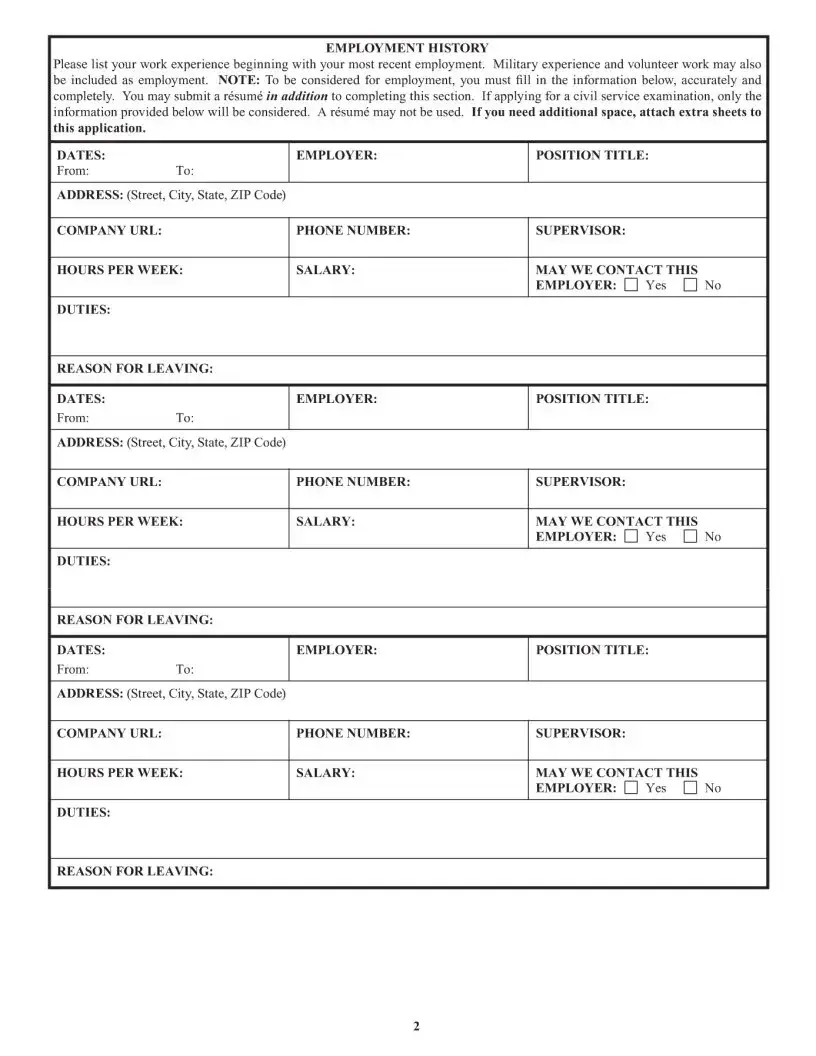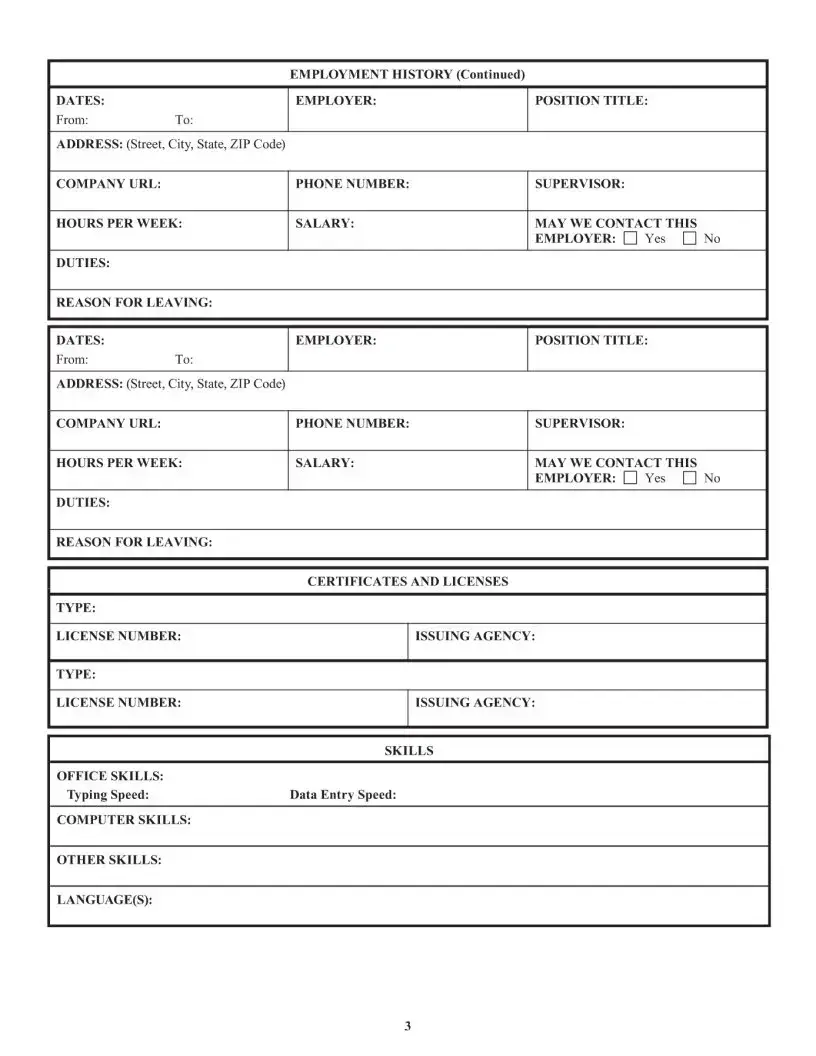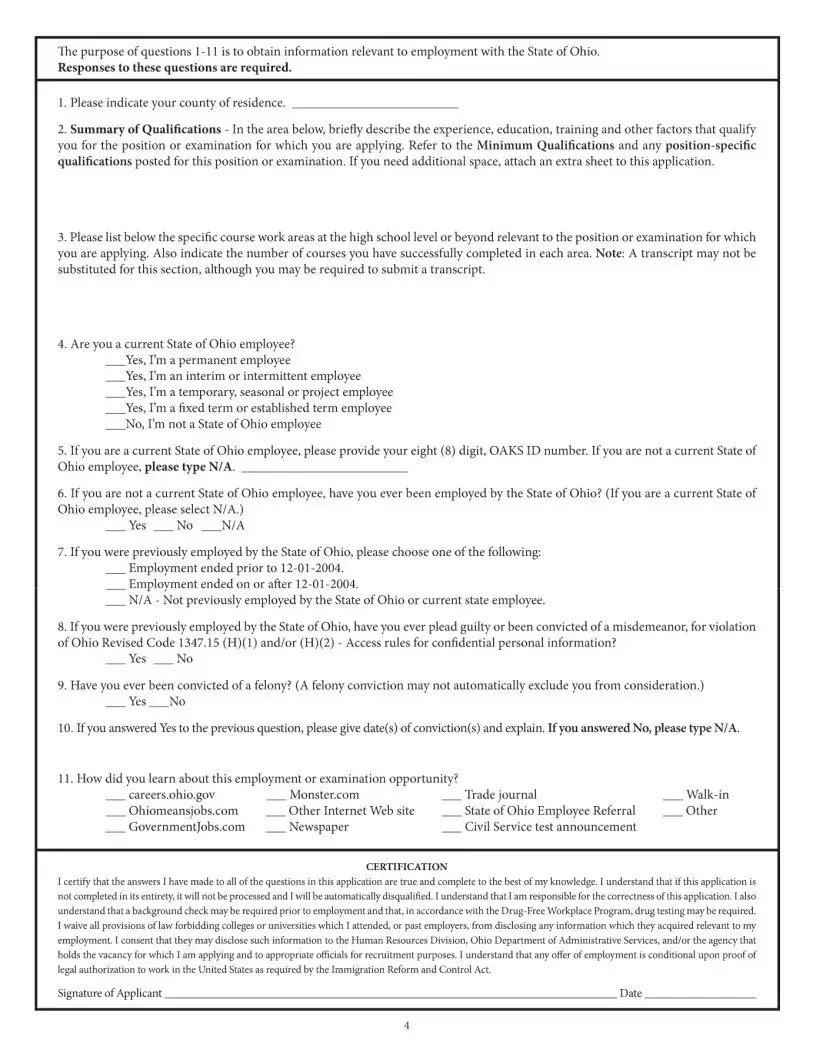The Ohio Civil Service Application form is akin to the Federal Employment Application form (OF-612) in that both serve as gateways to public sector employment opportunities. They collect detailed personal, educational, and prior work experience information to assess an applicant's qualifications for governmental roles. The emphasis is on transparently documenting qualifications and experience to match candidates with suitable positions, reflecting a structured approach to hiring within government entities. Like the Ohio form, the OF-612 is often the first crucial step in a meticulous selection process.
Similarly, the Job Application Form used by private sector employers shares characteristics with the Ohio Civil Service Application form. Although aimed at private companies rather than public sector organizations, this document requests information on the applicant's background, education, and work history, allowing employers to screen potential employees. The form's structure ensures that all candidates provide the same type of information, promoting fairness and efficiency in the hiring process, akin to the standardized method seen in the Ohio application.
The Resume or Curriculum Vitae (CV) that an applicant submits when applying for a job parallels the Ohio Civil Service Application form in its function of providing a comprehensive overview of the applicant's employment and educational background. While the format may be less structured than the Ohio form, the purpose remains similar: to supply hiring managers with the necessary data to evaluate an applicant's suitability for a position. The emphasis on presenting qualifications and experience succinctly is a shared goal.
The Volunteer Application forms found in many non-profit organizations are akin to the Ohio Civil Suit Application in their purpose of gathering applicants' background information to find suitable volunteer placements. Like the Ohio form, these applications ask for personal details, areas of interest, availability, and sometimes references, ensuring the potential volunteers' alignment with the needs of the organization and the roles available.
Grant Application forms, used by individuals or organizations seeking funding, share similarities with the Ohio Civil Service Application form in requiring detailed information about the applicant. The objective here is to judge the merit and feasibility of the proposed projects against specific criteria, similar to assessing an individual’s qualifications for a job. This similarity underscores the importance of presenting one's case compellingly and accurately in both contexts.
Credit Application forms for personal or business loans are somewhat similar to the Ohio Civil Service Application form since they require the applicant to provide comprehensive personal and financial information. Lenders use this data to assess the applicant's creditworthiness and reliability, paralleling the way job applications are used to evaluate suitability for employment. The emphasis on thoroughness and accuracy is critical in both instances.
The College Application forms that aspiring students complete to apply for admission to higher education institutions resemble the Ohio Civil Service Application form in their function of collecting exhaustive personal and academic information. Both forms play critical roles in life-changing decisions, determining college admissions and career opportunities, respectively. The necessity for precision and completeness is equally stressed, facilitating an equitable selection process.
The Tenant Application form, required for rental agreements, demands detailed personal and financial information from potential renters, similar to the Ohio Civil Service Application form’s requirements from job seekers. Landlords assess this information to determine the reliability and suitability of applicants as tenants, which mirrors the way employers evaluate potential hires. The shared goal is to ensure a good match between the parties involved.
Professional Licensing forms, which practitioners in various fields must complete to obtain the necessary authorization to practice, echo the Ohio Civil Service Application form in their comprehensive evaluation of qualifications and background. These forms ensure that candidates meet the professional standards required, similar to how job applications assess suitability and competence. This parallel underscores the importance of regulatory compliance and suitability in professional settings.
Finally, the Membership Application forms for clubs or associations bear resemblance to the Ohio Civil Service Application form as they collect personal information, interests, and occasionally, professional backgrounds to determine eligibility and alignment with the organization's goals. The principle of identifying a good fit, whether for employment or membership, reflects a common objective across different types of application processes, emphasizing the role of structured information gathering in decision-making.
